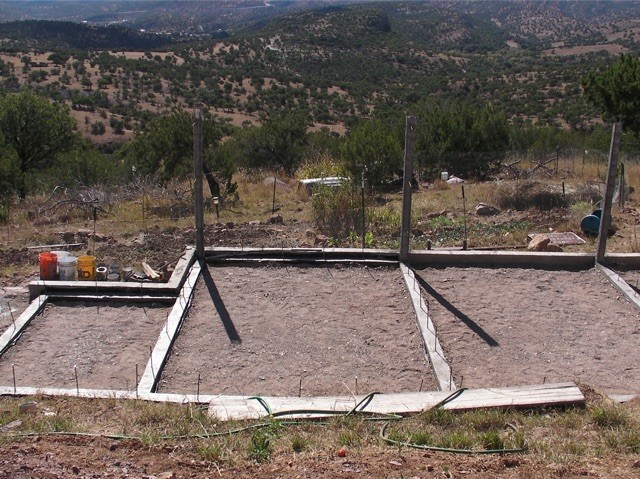
Foundations vary according to the material you will be using for your walls and roof, not to mention your particular soil and climate. You’ll have to spend some time researching the strength, width and depth that your foundation will need to be.
Providing a compacted sand base for your home’s foundation is not a bad idea. It offers a level, firm base with good drainage.
Water drains easily through sand, taking it away from the base of your home where it could freeze and cause severe damage. A compacted sand bed is a great start to most buildings. This was a favorite method of Frank Lloyd Wright.
Once you have cleared the site where you will be building, add a layer, maybe 6″ deep, of sand. You will need to hire a compactor to make sure the layer is firm. Compact the layer well, then add another 6″ of sand. Compact again, and add another layer. As you compact the sand, it will reduce it height. If you do not compact it well, the foundation and building can sink and shift, causing cracks in your walls, doors to fit poorly, etc.
If the sand is really dry, add water, but be careful not to wet it too much. You want it just wet enough to compact well. When it is fully compacted, you can begin work on your house.
Some forms of building, like earthbags and rapidobe, do not require a concrete foundation. That said, you do not want to just lay the bags of earth directly on the ground. Water, ice, and the fact that the ground will not be level, can cause damage and make the walls shift. For these types of construction, a gravel or rubble foundation is fine and will save you considerable money.
Dig a trench, however deep is necessary for your soil and climate. You want it to be wider than your walls. Fill the trench with gravel or crushed rubble, so that the top is level. Compact this well. You can then start laying your earthbags or set up the rapidobe bag and start filling them.
If you have issues with deep freezes in your climate, add a drainage pipe to the bottom of the gravel trench to drain water away from the base of the wall.
The foundation acts as the base for your home. You cannot go back and redo it once the house is built, so it pays to do it right the first time. Reinforced concrete is perhaps the strongest option available to you, and it is preferable for most forms of building.
The foundation must be wider than your walls, and sufficiently thick to withstand the weight of your building. Exact depths and widths depend on the house you intend to build on it, but one thing that will not change is the need for metal reinforcement. Always put metal in the concrete, as it can crumble without it. When using several pieces of something like rebar, make sure that they overlap each over at least a foot on each join.
For instructions on building a concrete foundation, see our how-to.